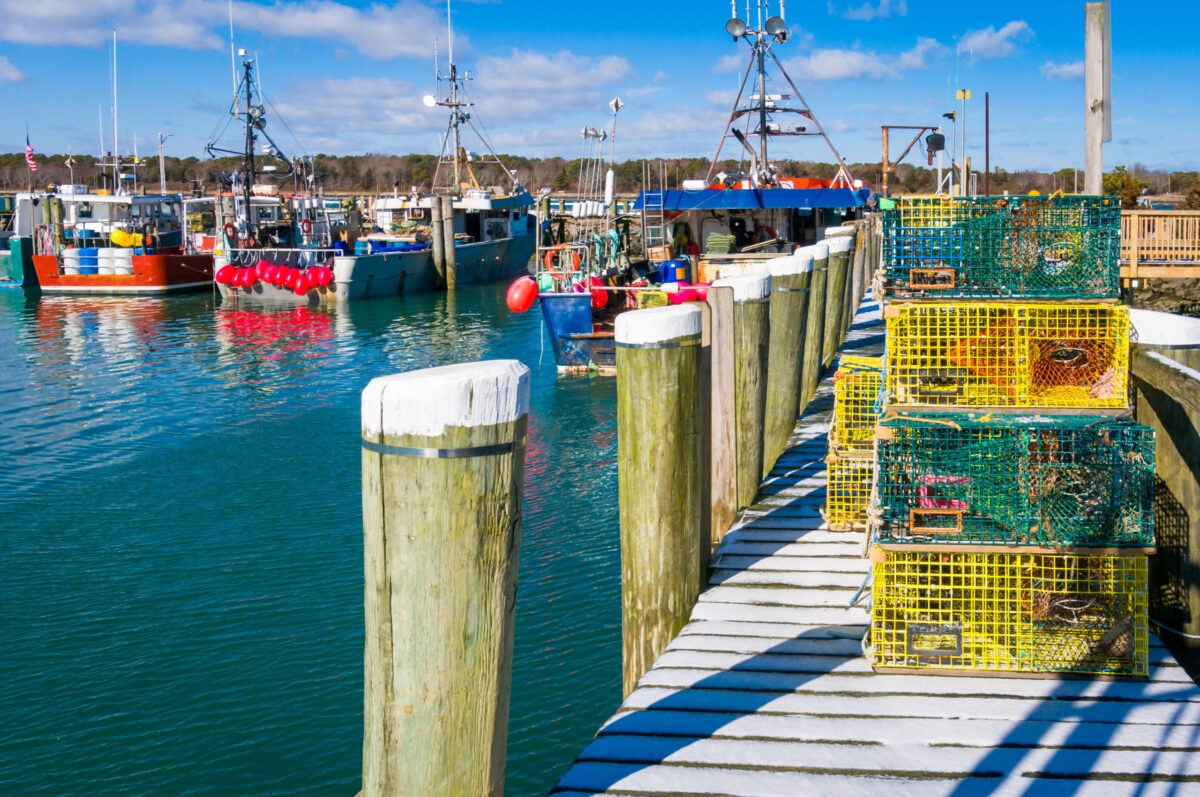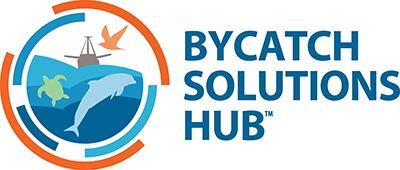Gear Types
Pots and Traps
Large whales can get entangled and drag buoy lines and traps for months.
Pots and traps are set on the ocean floor and target benthic fish and crustaceans. In traditional pots and traps, a buoyed rope runs from the trap on the ocean floor to a surface buoy used to mark the trap below.

Different types of traps on the docks at a harbor.
The biggest bycatch risk for ETP species is entanglement in the buoy line, which can get wrapped around the fins and body of large whales and sea turtles.
Entanglement in these buoy lines often leads to severe lacerations from the rope directly and starvation through injuries that impact feeding. Large whales can get entangled and drag buoy lines and traps for months.
Abandoned and lost traps also pose a risk to sea turtles and seabirds, which use them for shelter or to feed, and can become trapped and drown.
ETP Impacts and Fishery Recommendations
- Restrict fishing in regions and times of the year when large whales migrate through or reside in fishing areas.
- Require a sophisticated gear-marking system that will provide easy identification of the fishery and location of entangled gear.
- Support the development and implementation of ropeless systems and virtual gear-marking technology.
- Ensure 100% compliance with all management measures specific to marine mammals, both at the country and management-organization level.
- Restrict fishing in regions and times of the year when sea turtles migrate through or reside in fishing areas.
- Support derelict trap removal programs to decrease the amount of abandoned and lost gear that sea turtles can get caught in.
- Support the development and implementation of ropeless systems and virtual gear-marking technology.
- Ensure 100% compliance with all management measures specific to marine mammals, both at the country and management-organization level.
- Support derelict trap removal programs to decrease the amount of abandoned and lost gear that seabirds can get caught it.
- Ensure 100% compliance with all management measures specific to marine mammals, both at the country and management-organization level.
Marine mammals are the most vulnerable to entanglement in pot and trap buoy lines. Entanglement in the mouth can break or bend the baleen and prevent a whale from feeding, leading to emaciation and rapid decrease in body condition. The rope can also lead to deep lesions on the whale’s body over time which is both painful and often fatal.
Large whales are typically strong enough to pull the traps off the sea floor, and can drag traps, ropes, and buoys for months. If the buoy line does not loosen and fall off, the rope will slowly cut through tissue, and the whale will die either from severe wounds or starvation. Many whales that have suffered long-term entanglements are emaciated and unlikely to ever recover, even after disentanglement.
Breakaway ropes and links attached to ropes can increase the chances that traps break off the line, decreasing the amount of material dragged by the whale. However, they have not been proven on the water and can be a safety risk to the crew while hauling if they break at the surface.
The best way to reduce risk to large whales is to remove buoy lines from the water.
The only way that this can be done is through trialing and adoption of ropeless (on-demand) fishing gear in areas that overlap with large whales.
General Recommendations
Like large whales, sea turtles are also susceptible to entanglement in buoy lines and therefore the recommendation to remove buoy lines from the water will decrease entanglement risk to both groups. In addition, sea turtles can also get trapped in derelict traps on the ocean floor and drown.
General Recommendations
Seabirds can become entangled in shallow-water traps, though this is unlikely. However, improper disposal of old pots and traps can lead to seabirds getting caught in traps on land and dying.
General Recommendations
Sharks and rays are not at risk of entanglement in buoy lines and are rarely caught in traps.
